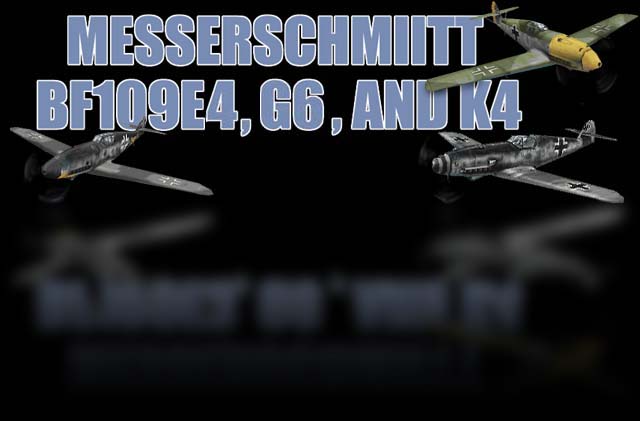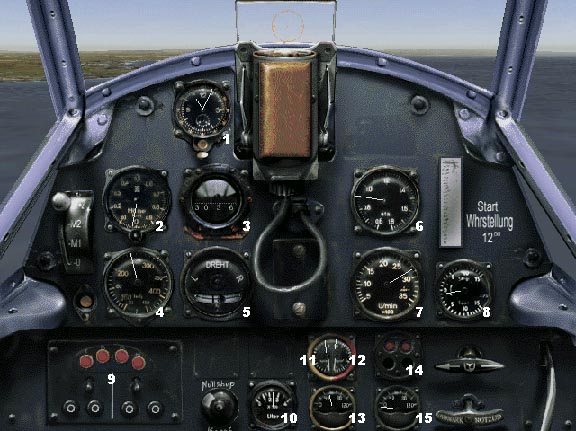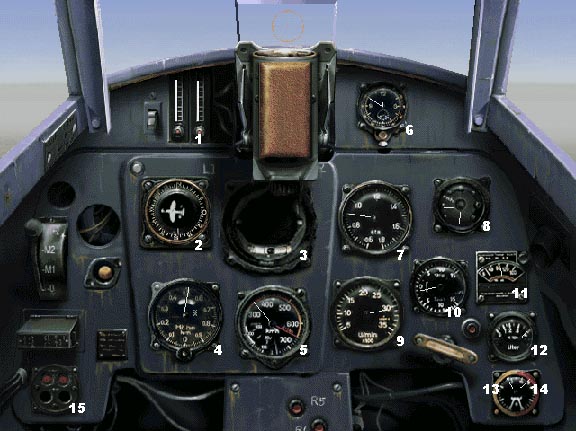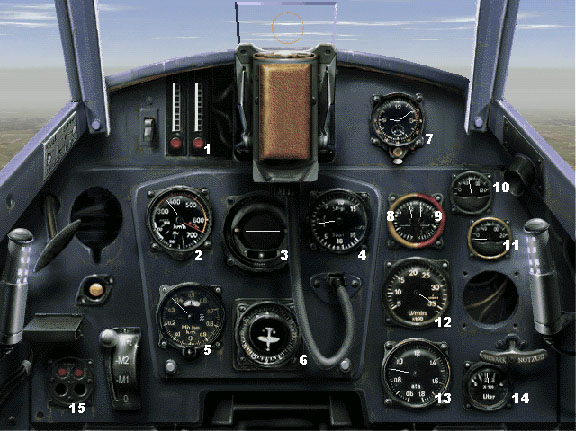
European Air War

Messerschmitt Bf.109
Notes: The G-6 variant had exceptional low speed handling characteristics. The K-4 model was best utilized as a high altitude dogfighter, which makes it an excellent interceptor late in the war. The Bf.109E-4 can only be flown in a clean configuration. The Bf.109G-6 and K-4 variants should be flown clean for all mission types except Strike and Intercept. For Strike missions, load a 250kg bomb. For intercept missions, add the dual gunpacks to increase your punch against enemy bombers.
The Bf.109 was the Luftwaffe's benchmark fighter throughout WWII. It first flew in 1937, saw combat during the Spanish Civil War, and some variants remained in service until the end of the war in 1945.
With a skilled pilot at the controls, the Bf.109 is a deadly adversary and can hold its own in most situations. It has good acceleration in a dive, but is somewhat slower than American contemporaries. Early model 109's are slightly faster than early model Spitfires, but over the years the 109 became heavier and slower while the Spitfire became faster. During the Battle of Britain, Luftwaffe pilots often escaped enemy Spitfires by pushing negative G and diving away. The early-model Spitfire's carburetor-fed engines will cut out under negative G; the 109's fuel-injected engines will not.
The 109 has an excellent climb rate, and a "climbing spiral" turn can sometimes be used to lure unwary opponents into a stall. With reasonable turning performance, the 109 can hold its own in a dogfight, assuming the pilot practices careful energy management. The Bf.109E-4 clearly outperformed the Spitfire I above 20,000 feet. At lower altitudes, the Spitfire (especially later models) will usually best a 109 in a sustained turning fight. The Bf.109E-4 is the lightest and best turning of the 109 variants. The G-6 carries substantially more firepower, but sacrificed turn performance for a more powerful engine. The K-4 has the largest engine of the group, but the poorest turn performance. As with most late-war Luftwaffe fighters, the K-4 pilot should keep speed high and avoid sustained turning battles.
Messerschmitt Bf.109E-4
Wingspan: 32 ft. 4 in.
Length: 28 ft. 4 in.
Height: 11 ft. 2 in.
Wing Area: 174 sq. ft.
Engine: Daimler-Benz DB601A rated at 1,100 hp.
Fuel: 106 gal. internal
Loaded Weight: 5,520 lb.
Wing Loading: 32 lb./sq. ft.
Maximum Speed: 354 mph.
Service Ceiling: 36,100 ft.
Rate of Climb: 3,280 ft./min.
Combat Radius: 125 miles
Armaments: 2 x 20mm MG-FF cannons , 2 x 7.92mm MG-17 machine guns
Ammunition: 60 rds/gun (20mm), 1000 rds/gun (13mm)

1. Clock
2. Altimeter
3. Magnetic Compass
4. Airspeed Indicator
5. Turn and Bank Indicator
6. Manifold Pressure Gauge
7. Tachometer
8. Rate of Climb Indicator
9. Weapon Selector
10. Fuel Gauge
11. Fuel Pressure Gauge
12. Oil Pressure Gauge
13. Engine Temperature Gauge
14. Landing Gear Position Indicator
15. Coolant Temperature Gauge
Messerschmitt Bf.109G-6
Wingspan: 32 ft. 7 in.
Length: 29 ft. 8 in.
Height: 11 ft. 2 in.
Wing Area: 173 sq. ft.
Engine: Daimler-Benz DB605A rated at 1,475 hp. (up to 1,800 hp. with MW-50 boost)
Fuel: 106 gal. internal
Loaded Weight: 6,950 lb.
Wing Loading: 40 lb./sq. ft.
Maximum Speed: 387 mph.
Service Ceiling: 38,550 ft.
Rate of Climb: 4,560 ft./min
Combat Radius: 150 miles
Armaments: 1 x 20mm MG-151 cannon, 2 x 13mm MG-131 machine guns
Ammunition:150 rds (20 mm), 300 rds/gun (13 mm)

1. Ammunition Counters
2. Repeater Compass
3. Artificial Horizon
4. Altimeter
5. Airspeed Indicator
6. Clock
7. Manifold Pressure Gauge
8. Homing Indicator
9. Tachometer
10. Rate of Climb Indicator
11. Engine Temperature Gauge
12. Fuel Gauge
13. Fuel Pressure Gauge
14. Oil Pressure Gauge
15. Landing Gear Position Indicator
Messerschmitt Bf.109K-4
Wingspan: 32 ft. 7 in.
Length: 29 ft. 4 in.
Height: 11 ft. 2 in.
Wing Area: 173 sq. ft.
Engine: Daimler-Benz DB605 ASCM/DCM rated at 1,550 hp. (up to 2,000 hp. with MW-50 boost)
Fuel: 106 gal. internal
Loaded Weight: 7,440 lb.
Wing Loading: 43 lb./sq. ft.
Maximum Speed: 452 mph.
Service Ceiling: 41,000 ft.
Rate of Climb: 4,820 ft./min
Combat Radius: 130 miles
Armaments: 1 x 30mm MK-108 cannon, 2 x 13mm MG-131 machine guns
Ammunition: 65 rds (30 mm), 300 rds/gun (13 mm)

1. Ammunition Counters
2. Airspeed Indicator
3. Artificial Horizon
4. Rate of Climb Indicator
5. Altimeter
6. Repeater Compass
7. Clock
8. Fuel Pressure Gauge
9. Oil Pressure Gauge
10. Engine Temperature Gauge
11. Coolant Temperature Gauge
12. Tachometer
13. Manifold Pressure Gauge
14. Fuel Gauge
15. Landing Gear Position Indicator
This material was included in the original 1998 release of European Air War by Microprose.
